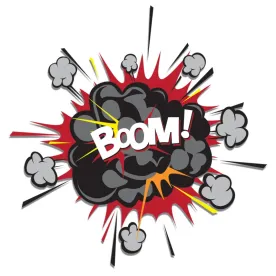According to the Center for Disease Control (CDC), 1.1 million people suffer burn injuries that require medical attention every year in the United States. Approximately 50,000 of these burn victims require hospitalization and 20,000 suffer major burns covering 25% of their body surface. Roughly 4,500 burn victims die annually as a result of their injuries and as many as 10,000 people in the United States die each year as a result of burn-related infections.
These statistics are scary, but they demonstrate the devastating consequences of burn injuries and the importance of prevention. There are many different types of burns, and it is important to know how each is classified.
First degree burns are burns to the top layer of the skin. Symptoms include redness, swelling, and pain to touch. There are usually no blisters, and healing usually occurs in 3-5 days. Sunburn is a first degree burn. Other examples of first degree burns include exposure to flash flames or minor scalding from exposure to hot liquid.
Second degree burns are often classified as partial or full thickness burns of the first two layers of skin (epidermis and dermis). Symptoms include a deep reddening of the skin, pain, blisters, a glossy or wet appearance from leaking fluid, and possible loss of skin. Partial thickness second degree burns often heal within 10-21 days without grafting, and scarring is usually minimal. Full thickness burns typically require excision and skin grafting to heal. These burns often result from contact with chemicals, scalds, or flash burns.
Third degree burns penetrate the full thickness of the skin and permanently destroy tissue. These burns extend into the subcutaneous tissues, can appear black or white, and will be dry. Due to the destruction of tissue, third degree burns are often painless. However, there is often pain caused by patches of first and second degree burns surrounding the third degree burn. Third degree burns result in permanent scarring and generally take months to heal, often after skin grafting. These burns often result from contact with flame, hot surfaces, hot liquids, chemicals or electricity.
In addition to the classifications for burn injuries, there are different types and causes for burn injuries. These include thermal burns, chemical burns, electrical burns, and radiological burns.
Thermal burns can be caused by flash, flame, scalding, or contact with a hot surface.
-
Flash burns are often caused by explosions of natural gas, propane, gasoline, or other flammable liquids. Flash burns involve intense heat for a very short period of time.
-
Flame burns involve prolonged exposure to intense heat, frequently associated with house fires, improper use of flammable liquids, automobile accidents, and clothing ignited by stoves and heaters.
-
Scalds are burns caused by hot liquids, such as water, oil, grease, or tar. Water at 140 degrees (F) can cause a deep burn in 3 seconds, but at 156 degrees (F) will cause the same injury in just 1 second. Freshly brewed coffee is generally 180 degrees (F).
-
Contact burns are often caused by hot metals, plastics, glass, or coals. Contact burns can be quite deep and painful.
Chemical burns are caused by strong acids or alkali substances. They continue to burn skin and tissue until the agent is deactivated. Alkali substances typically cause more severe burn injuries because they react with the lipids in the skin.
Electrical burns are caused by AC or DC current. Electrical current passes through the path of least resistance and causes injury in areas other than the contact/entry site. The extent and severity of an electrical burn cannot be determined from the external injury alone, as they can cause severe burns to internal tissue.
Radiological burns are caused by alpha, beta, or gamma radiation. People exposed to these types of radiation often need to undergo decontamination to stop the injury process.
Burns cause very serious injuries, which can result in ongoing pain, permanent scarring and disfigurement, depression, post-traumatic stress disorder, and other psychological problems. People who experience burn injuries suffer in ways others have difficulty comprehending. This is why it is important, if you suffered a burn injury as the result of another’s negligence, that you surround yourself with the right support group, including family, friends, physicians, psychologists and, when appropriate, legal counsel.



 />i
/>i

